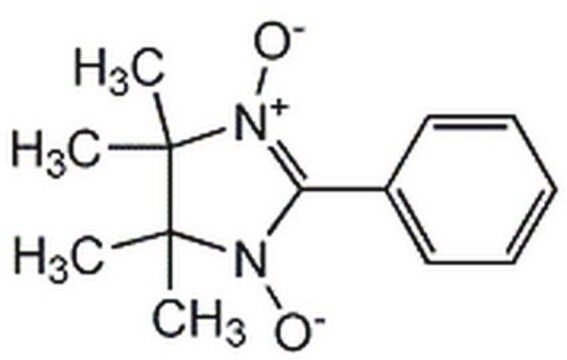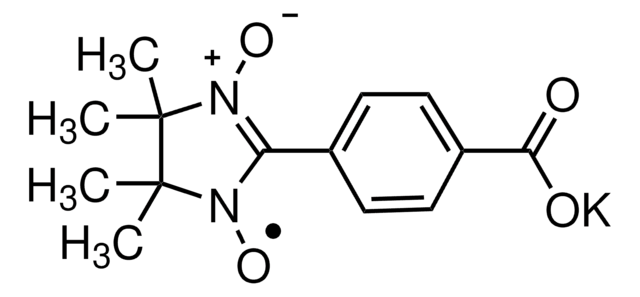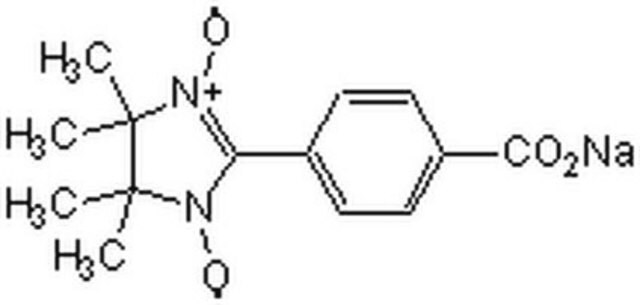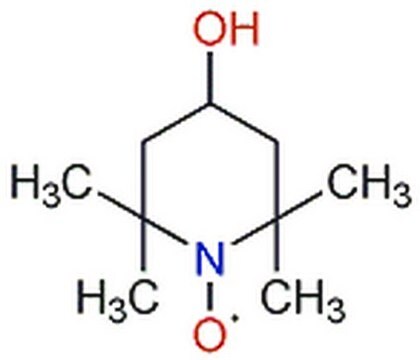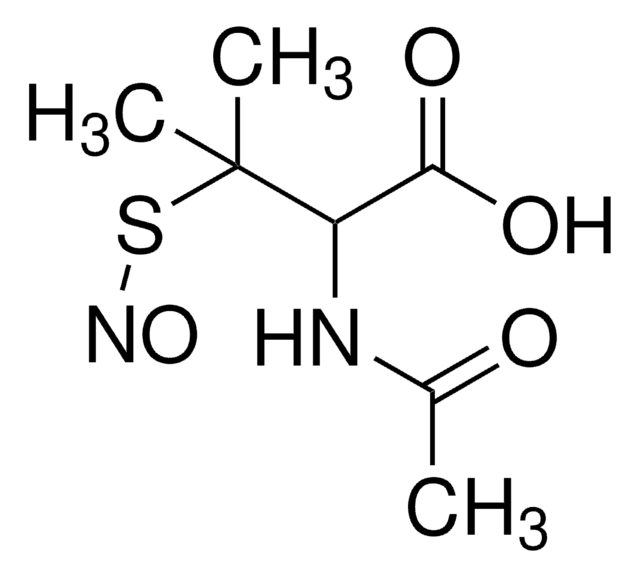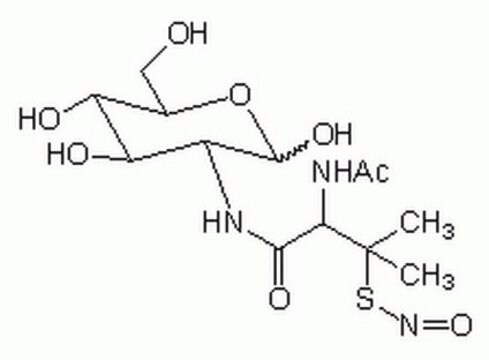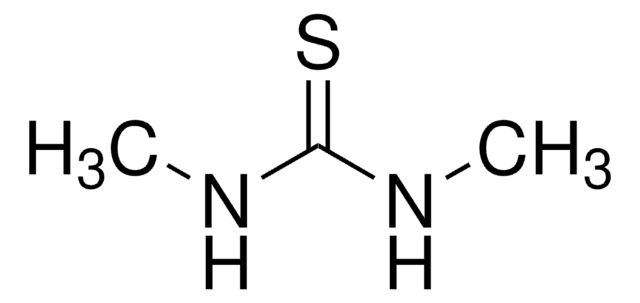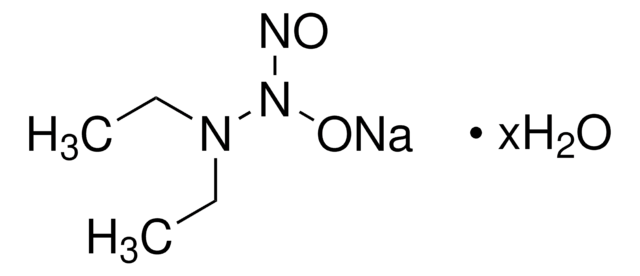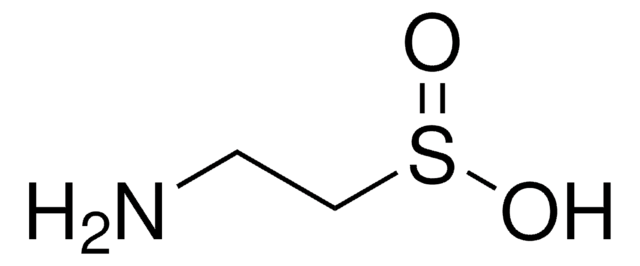P5084
PTIO
Synonyme(s) :
2-Phenyl-4,4,5,5-tetramethylimidazoline-1-oxyl 3-oxide
Se connecterpour consulter vos tarifs contractuels et ceux de votre entreprise/organisme
About This Item
Formule empirique (notation de Hill):
C13H17N2O2
Numéro CAS:
Poids moléculaire :
233.29
Numéro MDL:
Code UNSPSC :
12352200
ID de substance PubChem :
Nomenclature NACRES :
NA.32
Produits recommandés
Forme
powder
Niveau de qualité
Température de stockage
2-8°C
Chaîne SMILES
CC1(C)N([O])C(c2ccccc2)=[N+]([O-])C1(C)C
InChI
1S/C13H17N2O2/c1-12(2)13(3,4)15(17)11(14(12)16)10-8-6-5-7-9-10/h5-9H,1-4H3
Clé InChI
DYUUGILMVYJEHY-UHFFFAOYSA-N
Application
2-phenyl-4, 4, 5, 5,-tetramethylimidazoline-1-oxyl 3-oxide (PTIO) has been used as a nitric oxide (NO) scavenger.
Actions biochimiques/physiologiques
2-phenyl-4, 4, 5, 5,-tetramethylimidazoline-1-oxyl 3-oxide (PTIOs) derivatives react with nitric oxide (NO) to yield the corresponding imino nitroxides (PTIs) and nitrogen dioxide (NO2).
A stable radical scavenger for nitric oxide; affects NO without affecting NO synthase; has significant inhibitory activity against NO biological actions.
Code de la classe de stockage
11 - Combustible Solids
Classe de danger pour l'eau (WGK)
WGK 3
Point d'éclair (°F)
Not applicable
Point d'éclair (°C)
Not applicable
Équipement de protection individuelle
dust mask type N95 (US), Eyeshields, Gloves
Faites votre choix parmi les versions les plus récentes :
Déjà en possession de ce produit ?
Retrouvez la documentation relative aux produits que vous avez récemment achetés dans la Bibliothèque de documents.
Les clients ont également consulté
Jiu-Gang Xue et al.
Journal of neurophysiology, 105(6), 2897-2906 (2011-04-08)
N-methyl-D-aspartate (NMDA) receptors (NMDARs) are implicated in synaptic plasticity and modulation of glutamatergic excitatory transmission. Effect of NMDAR activation on inhibitory GABAergic transmission remains largely unknown. Here, we report that a brief application of NMDA could induce two distinct actions
Reactions of PTIO and carboxy-PTIO with *NO, *NO2, and O2-*.
Goldstein S
The Journal of Biological Chemistry, 278 (51), 50949-50955 (2003)
Christal G Coleman et al.
The Journal of neuroscience : the official journal of the Society for Neuroscience, 30(36), 12103-12112 (2010-09-10)
Chronic intermittent hypoxia (CIH) is a concomitant of sleep apnea that produces a slowly developing chemosensory-dependent blood pressure elevation ascribed in part to NMDA receptor-dependent plasticity and reduced nitric oxide (NO) signaling in the carotid body. The hypothalamic paraventricular nucleus
Victor Parro et al.
Frontiers in microbiology, 10, 929-929 (2019-05-28)
Potential benthic habitats of early Mars lakes, probably oligotrophic, could range from hydrothermal to cold sediments. Dynamic processes in the water column (such as turbidity or UV penetration) as well as in the benthic bed (temperature gradients, turbation, or sedimentation
Victoria P A Johnstone et al.
Learning & memory (Cold Spring Harbor, N.Y.), 18(10), 625-633 (2011-09-22)
Long-term potentiation (LTP) is an important process underlying learning and memory in the brain. At CA3-CA1 synapses in the hippocampus, three discrete forms of LTP (LTP1, 2, and 3) can be differentiated on the basis of maintenance and induction mechanisms.
Notre équipe de scientifiques dispose d'une expérience dans tous les secteurs de la recherche, notamment en sciences de la vie, science des matériaux, synthèse chimique, chromatographie, analyse et dans de nombreux autres domaines..
Contacter notre Service technique